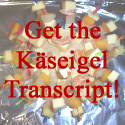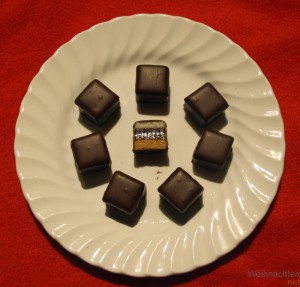Weihnachtskrippe
Wednesday, December 2nd, 2009Weihnachtskrippe is the name given to a Nativity scene in Germany, often found in town centres during advent. It depicts the birth of Jesus in Bethlehem.
Many families have their own model Weihnachtskrippe at home. Some of these are self-made, others have been collected over a period of time with a new figure being added each year. Typically, these are also passed down through the generations.
Surprisingly, they were banned in churches at the end of the 18th Century.
To hear a simple explanation and a short discussion in German, listen to the podcast:
(Press the ÔÇťplayÔÇŁ button to listen to the podcast)



 The word Dominostein is used to describe a small baked sweet that is eaten at Christmas time in Germany. It is made up of two or three layers, the base being
The word Dominostein is used to describe a small baked sweet that is eaten at Christmas time in Germany. It is made up of two or three layers, the base being 
